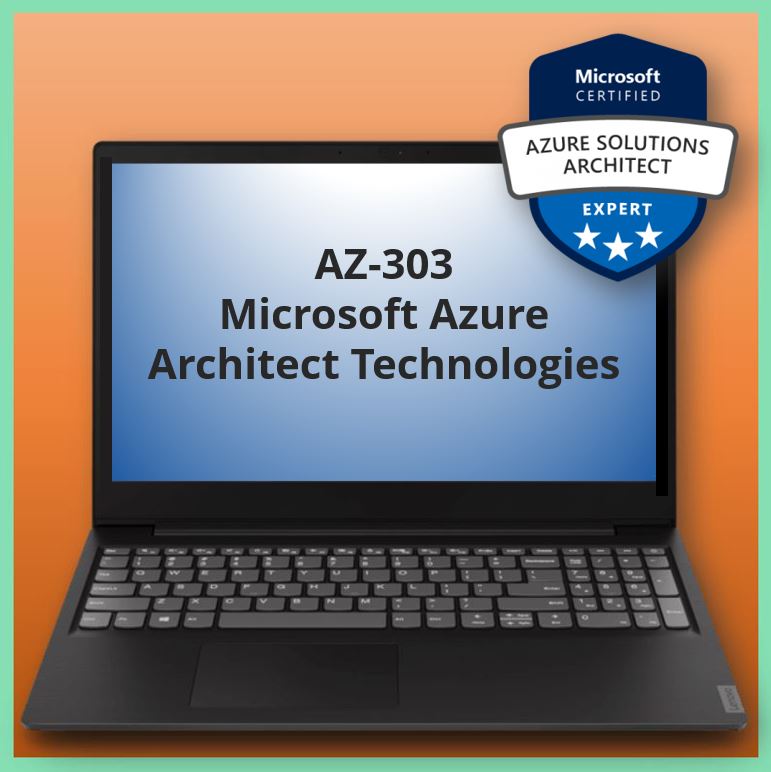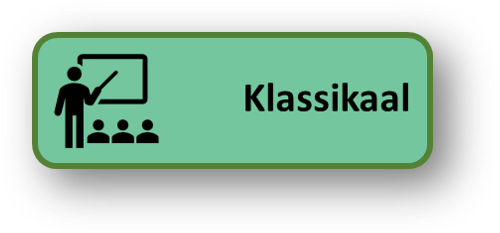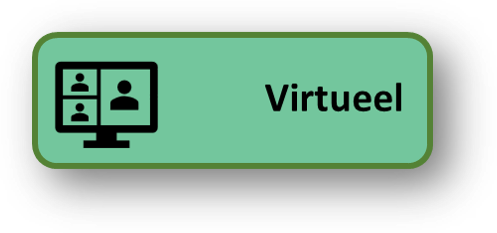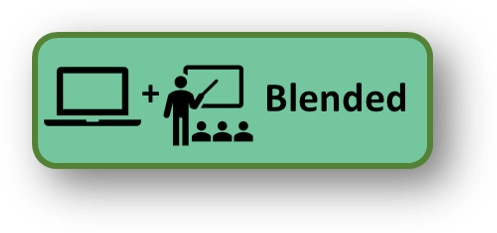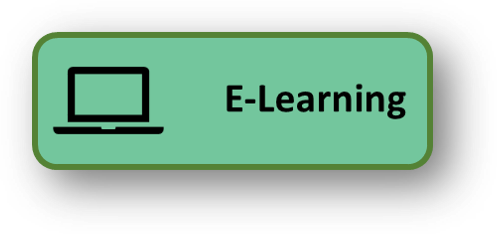Aangeboden leervormen
Microsoft Azure Architect Technologies - AZ-303
This course teaches Solutions Architects how to translate business requirements into secure, scalable, and reliable solutions. Lessons include virtualization, automation, networking, storage, identity, security, data platform, and application infrastructure. This course outlines how decisions in each theses area affects an overall solution.

FILMPJE
Voor wie
This course is for IT Professionals with expertise in designing and implementing solutions running on Microsoft Azure. They should have broad knowledge of IT operations, including networking, virtualization, identity, security, business continuity, disaster recovery, data platform, budgeting, and governance. Azure Solution Architects use the Azure Portal and as they become more adept they use the Command Line Interface. Candidates must have expert-level skills in Azure administration and have experience with Azure development processes and DevOps processes.
Programma
Voor de omschrijving van e-learning klikt u hier
Module 1: Implement VMs for Windows and Linux
In this module, you will learn about Azure virtual machines including planning, creating, availability and extensions. This module includes:
Lessons
Select Virtual Machine Size
Configure High Availability
Implement Azure Dedicated Hosts
Deploy and Configure Scale Sets
Configure Azure Disk Encryption
After completing this module, students will be able to:
Plan for virtual machine implementations.
Create virtual machines.
Configure virtual machine availability, including scale sets.
Understand High Availability options for VMs in Azure
Module 2: Automate Deployment and Configuration of Resources
In this module, you will learn about the tools an Azure Administrator uses to manage their infrastructure. This includes the Azure Portal, Cloud Shell, Azure PowerShell, CLI, and Resource Manager Templates. This module includes:
Lessons
Azure Resource Manager Templates
Save a Template for a VM
Evaluate Location of New Resources
Configure a Virtual Hard Disk Template
Deploy from a Template
Create and Execute an Automation Runbook
After completing this module, students will be able to:
Leverage Azure Resource Manager to organize resources.
Use ARM Templates to deploy resources.
Create and Execute an Automation Runbook
Deploy an Azure VM from a VHD
Understand Azure encryption technologies
Module 3: Implement Virtual Networking
In this module, you will learn about basic virtual networking concepts like virtual networks and subnetting, IP addressing, network security groups, Azure Firewall, and Azure DNS.
Lessons
Virtual Network Peering
Implement VNet Peering
After completing this module, students will be able to:
Connect services with Virtual Network Peering
Configure VNet Peering
Understand Service Chaining
Modify or delete VNet Peering
Module 4: Implement Load Balancing and Network Security
In this module, you will learn about network traffic strategies including network routing and service endpoints, Azure Load Balancer, Azure Application Gateway, and Traffic Manager.
Lessons
Implement Azure Load Balancer
Implement an Application Gateway
Understand Web Application Firewall
Implement Azure Firewall
Implement Azure Front Door
Implementing Azure Traffice Manager
Implement Network Security Groups and Application Security Grou
Implement Azure Bastion
After completing this module, students will be able to:
Select a Load Balancer solution
Configure Application Gateway
Implement Azure Firewall
Create an Azure Front Door
Understand Traffic Manager routing methods
Configure Network Security Groups (NSGs)
Module 5: Implement Storage Accounts
In this module, you will learn about basic storage features including storage accounts, blob storage, Azure files and File Sync, storage security, and storage tools.
Lessons
Storage Accounts
Blob Storage
Storage Security
Managing Storage
Accessing Blobs and Queues using AAD
Configure Azure Storage Firewalls and Virtual Networks
After completing this module, students will be able to:
Understand Storage Account services and types
Configure Blob storage, accounts, containers, and access tiers
Implement Shared Access Signatures
Understand Azure Storage firewalls and virtual networks
Module 6: Implement Azure Active Directory
In this module, you will learn how to secure identities with Azure Active Directory, and implement users and groups.
Lessons
Overview of Azure Active Directory
Users and Groups
Domains and Custom Domains
Azure AD Identity Protection
Implement Conditional Access
Configure Fraud Alerts for MFA
Implement Bypass Options
Configure Trusted IPs
Configure Guest Users in Azure AD
Manage Multiple Directori
After completing this module, students will be able to:
Understand how Multiple AAD organizations interact
Add Guest Users to Azure AD
Configure Location Condition Configuration
Configure Azure MFA settings
Implement Conditional Access Azure MFA
Module 7: Implement and Manage Azure Governance
In this module, you will learn about managing your subscriptions and accounts, implementing Azure policies, and using Role-Based Access Control.
Lessons
Create Management Groups, Subscriptions, and Resource Groups
Overview of Role-Based Access Control (RBAC)
Role-Based Access Control (RBAC) Roles
Azure AD Access Reviews
Implement and Configure an Azure Policy
Azure Blueprints
After completing this module, students will be able to:
Understand Resource Group 0rganization
Understand how RBAC works
Create an Azure AD access review
Create and manage policies to enforce compliance
Create a Blueprint
Module 8: Implement and Manage Hybrid Identities
In this module, you will learn how to install and configure Azure AD Connect and implement Azure AD Connect Health.
Lessons
Install and Configure Azure AD Connect
Configure Password Sync and Password Writeback
Configure Azure AD Connect Health
After completing this module, students will be able to:
Implement Azure AD seamless Single Sign-On
Perform an Azure AD Connect installation
Implement Azure AD Connect Health
Module 9: Manage Workloads in Azure
In this module, you will learn how to migrate workloads using Azure Migrate, perform VMware agent-based and agent-less migrations, and perform Azure Backup and Azure Site Recovery.
Lessons
Migrate Workloads using Azure Migrate
VMware – Agentless Migration
VMware – Agent-Based Migration
Implement Azure Backup
Azure to Azure Site Recovery
Implement Azure Update Management
After completing this module, students will be able to:
Understand agent-based migration architecture
Prepare for Azure for migration
Prepare an on-premises VMware environment
Understand Azure VM backup architecture
Manage updates and patches for Azure VMs
Module 10: Implement Cloud Infrastructure Monitoring
In this module, you will learn about Azure Monitor, Azure Workbooks, Azure Alerts, Network Watcher, Azure Service Health, Azure Application Insights.
Lessons
Azure Infrastructure Security Monitoring
Azure Monitor
Azure Workbooks
Azure Alerts
Log Analytics
Network Watcher
Azure Service Health
Monitor Azure Costs
Azure Application Insights
Unified Monitoring in Azure
Module 11: Manage Security for Applications
In this module, you will learn about Azure Key Vault and implementing authentication using Azure Managed Identities.
Lessons
Azure Key Vault
Azure Managed Identity
After completing this module, students will be able to:
Explain Key Vault uses such as screts, key, and Cerficate management
Use Managed Identities with Azure resources
Module 12: Implement an Application Infrastructure
In this module, you will learn how to create an App Service web App for Containers, create and configure an App Service Plan, and create and manage Deployment Slots.
Lessons
Create and Configure Azure App Service
Create an App Service Web App for Containers
Create and Configure an App Service Plan
Configure Networking for an App Service
Create and Manage Deployment Slots
Implement Logic Apps
Implement Azure Functions
After completing this module, students will be able to:
Configure an Azure App Service
Create an App Service Plan
Create a Workflow using Azure Logic Apps
Create a Function App
Module 13: Implement Container-Based Applications
In this module, you will learn how to run Azure Container instances and how to deploy Kubernetes with AKS.
Lessons
Azure Container Instances
Configure Azure Kubernetes Service
After completing this module, students will be able to:
Run Azure Container instances
Deploy Kubernetes with AKS
Module 14: Implement NoSQL Databases
In this module, you will learn about Azure Table Storage and recommend options for CosmsoDB APIs.
Lessons
Configure Storage Account Tables
Select Appropriate CosmosDB APIs
After completing this module, students will be able to:
Outline the Table Service Data Model
Understand options for Azure Cosmos DB
Understand high availability using CosmosDB
Module 15: Implement Azure SQL Databases
In this module, you will create an Azure SQL Database single database, create an Azure SQL Database Managed Instance, and review high-availability and Azure SQL database.
Lessons
Configure Azure SQL Database Settings
Implement Azure SQL Database Managed Instances
High-Availability and Azure SQL Database
After completing this module, students will be able to:
Create an Azure SQL Database single database
Create an Azure SQL Database Managed Instance
Recommend high-availability architectural models used in Azure SQL Database
Voorkennis
Successful Azure Solution Architects start this role with experience on operating systems, virtualization, cloud infrastructure, storage structures, and networking.
• Understanding of on-premises virtualization technologies, including: VMs, virtual networking, and virtual hard disks.
• Understanding of network configuration, including TCP/IP, Domain Name System (DNS), virtual private networks (VPNs), firewalls, and encryption technologies.
• Understanding of Active Directory concepts, including domains, forests, domain controllers, replication, Kerberos protocol, and Lightweight Directory Access Protocol (LDAP).
• Understanding of resilience and disaster recovery, including backup and restore operations.
Examen
MICROSOFT AZ-303
Direct naar examen: MICROSOFT AZ-303
Certificering:
Klik voor meer info over Azure certificering


